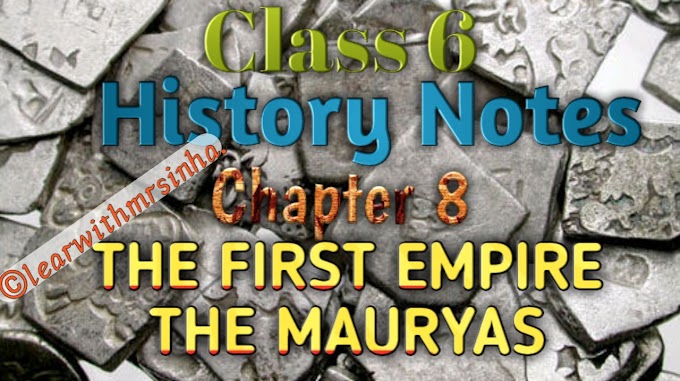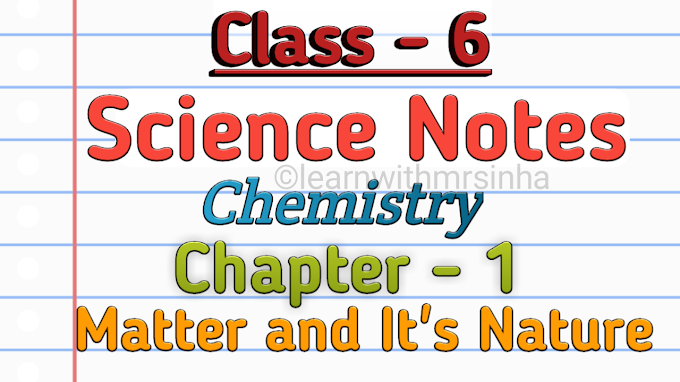The Gupta and Post-Gupta Period Notes Class 6
Information about the Gupta period is available from both archaeological (like – Allahabad Pillar Inscription, Temples, paintings and coins) and literary sources (like – work of Kalidasa and the accounts of Fa Hien and It-sing).
Political History
Chandragupta I (AD 320-335)
· The first powerful ruler of dynasty.
· Married Kumardevi, a princess of the Lichchhavi tribe.
· Empire extended from Magadha to Prayag (Allahabad).
· Adopted the title of ‘Maharajadhiraja’ means ‘the king of kings’.
Samudragupta (AD 335-375)
· Son of Chandragupta I. (greatest ruler of dynasty)
· Prayag Prashasti or Allahabad Pillar Inscription – the main source of information on his region.
· The Prashasti (Sanskrit word meaning ‘in praise of’) was composed by Harisena. (Samudragupta’s court poet)
The Prayag Prashasti
The prashasti lists the rulers against whom Samudragupta fought and also describe his policies.
· In north, he defeated four powerful kings and numerous smaller kings. The territories were administered directly.
· Defeated 12 rulers of the Deccan and the far south (Dakshinapatha). The rulers only had to pay an annual tribute and accept Samudragupta as their overlord.
· Defeated many kingdoms in east – Nepal, Assam and Bengal. Ruler had to accept his suzerainty and pay him a tribute.
· Also defeated the forest tribes of the Vindhya region.
Chandragupta II (AD 375-415)
· Son of Samudragupta. Also known as Vikramaditya.
· Defeated the Shakas and took control of the ports of Broach, Cambay and Sopara.
· The ‘navratnas’ or the nine gems lived in his court. Poet Kalidasa was one of them.
Fa Hien came to India during Chandragpta’s region and has written about many other poets, philosophers and writers who lived at the court of the king. And also written about the life of the common people.
Later Guptas
· After Chandragupta II, Kumargupta and Sakandagupta were powerful Gupta rulers.
· During the reign of Skandagupta, the empire was threatened by the Hunas.(the nomedic tribesmen of Central Asia.)
· They ended the rule of the dynasty.
THE POST-GUPTA PERIOD
After the end of the Gupta period, the kingdom of Harsha was dominant in the north. The Challukyas ruled in the Deccan. The Pallavas were powerful in the south.
HARSHAVARDHANA (AD 606-647)
The break-up of the Gupta Empire was followed by a period of disorder. Small kingdoms fought against one another. Finally, Harshavardhana conquered these kingdoms and established a powerful empire.
Sources
·
Harshacharita
:- the biography of the king written (Sanskrit) by Banabhatta
(court poet). (lists the military and cultural achievements)
·
The other is the account of Hiuen Tsang.
(visited India during the Harsha’s region) (spent eight years in the court of
Harsha)
·
He has written in detail about the developments
during these years.
Military Campaigns
· The capital of Harsha’s empire was Kanauj.
· Harsha conquered Punjab, eastern Rajashthan and the whole of the Ganga valley, up to Assam.
· Harsha did not annex all the territories that he conquered. He allowed some kings to continue ruling.
Harsha – A patron of arts and learning
· He wrote three plays in Sanskrit – Ratnavali, Priyadarshika, and Nagananda.
· Scholars such as Banabhatta, Subandhu and Dandin lived in his court.
· Harsha was a worshiper of Shiva but later he became Buddhist.
· Organized a grand assembly at Kanauj in AD 641.
· He also gave money to the University of Nalanda.
Nalanda is in Bihar. The university here was perhaps established in the fifth century by the Gupta rulers. The chief patron of the university was King Harshavardhana. The university was the first residential university in the world. Over 10,000 students and 2,000 teachers lived here. It was a university meant only for men. Students who wanted to join the university were interviewed by senior monks. Only when the monks were convinced that a particular student was serious and keen to learn more, was he granted admission. The Subjects taught included Buddhist philosophy, logic, grammar, medicine and the Vedas. The library of the university was spread over three buildings. One of the three was called Ratna Sagar, which means ‘an ocean of gems’. The university flourished between the fifth and the twelfth century.
Hiuen Tsang’s account
· Informs us that agriculture was the main occupation of villagers.
· Traders and craftsmen lived in towns.
· Peoples were simple, honest and very hospitable.
· Most peoples were vegetarian and avoid even onions and garlic.
· Existence of a rigid caste system.
· Peoples were divided into numerous casts and sub-casts.
· The ‘chandalas’ or untouchables had to live outside the city.
THE CHALUKYAS
After the decline of the Satavahanas, many small kingdoms arose in the Deccan. The Vakatakas were the most powerful of these. They, however, ruled for a brief period. They were succeeded by the Chalukyas. Their capital was Vatapi (or Badami).
Pulakeshin II (AD608-642)
· The most famous Chalukyan ruler.
· Ravikirti :- Prashasti of his court poet. Information available about his region.
· He defeated the Pallava king, Mahendravarman I
· Pulakeshin II sent an embassy to the court of Khusroa II (the king of Persia).
· Hiuen Tsang, during his stay in India, visited the court of Pulakeshin II.
· The Chalukyas became weak after the death of Pulakeshin II.
· The Rashtrakutas replaced them.
THE PALLAVAS
· The Pallavas ruled from Kanchipuram or Kanchi (near Chennai).
· Mahendravarman I (AD 600-630) and Narasimhavarman I (AD 630-668) were the powerful rulers of this dynasty.
· Narasimhavarman I defeated Pulakeshin II and captured Vatapi.
· He took the title of ‘Vatapikonda’ or the conqueror of Vatapi.
· He also led successful expeditions to Sri Lanka.
· Continous military conflicts weakened the Pallavas.
· Their rule was ended by the Cholas in the ninth centure.
ADMINISTRATION
· Sources – The accounts of Fa Hien and Hiuen Tsang.
· The king was the head of administration. A council of ministers assisted him.
· The empire was divided into provinces or ‘bhuktis’.
· Provinces were further divided into districts or ‘vishayas’.
· Princes were often appointed as the governors of provinces.
· District council help in administering the district.
· The village was the lowest administrative unit. Looked after by the elders of the village.
Revenue
· Main occupation Agriculture
· Revenue – Land
· Revenue officers collect the revenue.
· Merchants and craftsmen also paid taxes.
· It was used to insure good administration, give grants and donations and maintain the army.
New Features
· The administration became decentralized. Local officers were independent of central control. They took decisions on their own. In the region ruled by the Pallavas, there were two local assemblies – the ur and the sabha.
· Some administrative positions became hereditary.
· The administrative officers came to be paid in land grants instead of cash. The officers were expected to collect revenue from this land.
· Whenever there was a weak ruler at the centre, they broke away from his control and declared themselves independent.
*****
· Samudragupta was a powerful ruler. The Allahabad Pillar Inscription lists his conquests.
· Chandragupta II was equally powerful. The navratnas lived at his court.
· Harshavardhana ruled over northern India from Kanauj. We learn about his reign from Harshacharita and Hiuen Tsang.
· The Chalukyas ruled from Vatapi in the Deccan. Ulakeshin II was the most powerful ruler. He defeated Harshavrdhana and Mahendravarman I.
· The Pallavas ruled from Kanchi. Mahendravarman I and Narsimhavarman I were very powerful.
· The empire was divided into provinces, districts and villages.
· The administration was decentralized; some administrative posts became hereditary; officers were paid through land grants.
Prophet Muhammad made Islam popular. The Muslim calendar starts from his migration from Mecca to Medina (in AD622). This event is known as the ‘Hijrat’. The followers of the Prophet are called Muslims.
Christianity became popular in the Roman empire. In 476, the Roman Empire came to an end.
Islam spread in Arabia and the surrounding areas. Prophet Muhammad was succeeded by four caliphs, and then by the Umayyid rulers. The Yamato Dynasty ruled in Japan. Shintoism became popular under them.
The Mayan culture in Central America was at its peak. The culture was spread over large parts of present day Mexico, Guatemala, Belize, Honduras, El Salvador and the Yucatan Peninsula. It consisted of more than 40 cities, the most important being Copan and Chichen Itza, the latter perhaps being the capital. Massive temples, some in theshape of stepped pyramids, have been found here. They are made of stone and are decorated with beautiful paintings and sculpture.
Class 6 social science chaper 11 notes cbse, New Empire and Kindom notes class 6 the Gupta Empire class 6 the gupta and post gupta period class 6 the gupta and post gupta period explain history chapter 11 notes class 6










0 Comments